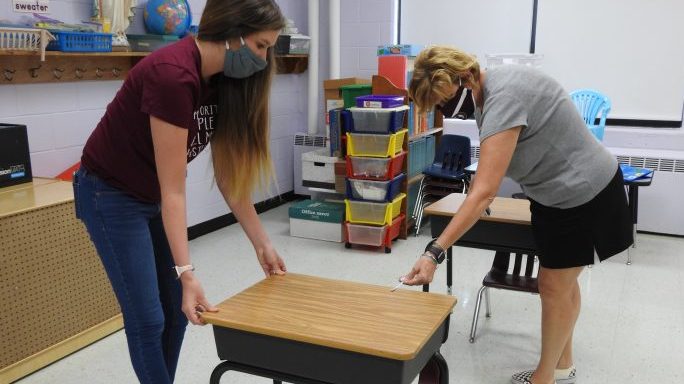Catholic schools are already closing at the highest rate since the tail end of the financial crisis in 2009-2010.
The numbers aren’t final, but so far 147 Catholic schools will close at the end of the school year and 26 others will be affected by mergers or consolidations, according to the latest National Catholic Education Association data.
“I think the pandemic has served to amplify and/or accelerate what you could consider pre-existing conditions in Catholic schools,” John Schoenig, senior director of teacher formation and education policy at the University of Notre Dame told Crux.
“I remember someone referring to (COVID-19) as Darwinist in terms of human health as well as institutional. The strong will get strong. The weaker will be even more vulnerable. For a number of Catholic schools already in financial peril this served to accelerate that peril or fragility.”
The 2009-2010 NCEA data shows 174 Catholic schools closed or were merged. Two years later that number was 212 because of the financial crisis.
Kathy Mears, interim president of the NCEA, told Crux the majority of closures this year are in rural areas where COVID-19 has left a lot of families in precarious financial situations. Some urban schools are in a similar boat. Meanwhile, she said suburban schools have fared the best because families have “more expendable income” to use for tuition.
But despite the short-term devastation caused by the pandemic, neither Schoenig nor Mears is concerned that it will have a negative long-term effect on Catholic education. In fact, they’re confident about the future, and point to the pandemic response as one reason why.
Schoenig said there’s been a “whatever it takes mentality” from Catholic schools across the country to meet the needs of students and families. And their smaller size has also allowed them to adapt to different learning models when needed.
“I think that adaptability long term could prove to be quite beneficial. The key will be that so many of these families elected to put their kids in Catholic school over these past few months because local public schools are not in person,” he said. “The key now is to demonstrate to them the value in keeping them there.”
Bishop Thomas Daly of Spokane, the U.S. bishops’ conference chairman-elect for Catholic education, agrees that Catholic schools have gone above and beyond throughout the pandemic. However, he acknowledges that the expenses of a Catholic education will continue to fall on alumni, parents and benefactors in the future and it does take sacrifice.
Speaking with Crux, he said the first step towards improving the financial situation is making sure there’s people in place with the “knowledge and capacity” to handle finances. From there, the church can “assure the laity and others that your money is well spent.”
The other challenge the bishop noted is secularism of both lay people and the institutions themselves that hurt Catholic education. Daly said too many Catholic schools are becoming more like other private schools.
“We can’t just take for granted that everybody in the school administration are with the mission of the Church,” Daly said. “This pandemic is causing a rightful examination of what makes this school Catholic. It’s not just the religious objects displayed throughout the facilities. It’s how the school is living the mission.”
A re-examination of each school’s mission and standards is the first step towards showing families that it’s committed to the Catholic mission and the value of a Catholic education as well, he added. Otherwise, in a society already growing more and more secular he doesn’t expect families to commit the money if they don’t see the value.
“If it’s not important to go to Mass on a regular basis on Sunday then nothing changes. It’s not important when they’re asked to make the financial sacrifice,” Daly said.
One way Schoenig said Catholic schools can show their value is through personal encounter, something Pope Francis referenced in his latest encyclical Fratelli Tutti.
“One effect of the pandemic is we’re kept apart. It’s more difficult to encounter a person,” Schoenig said. “What will be key is for Catholic schools to show these families that they strive to truly encounter these kids and help them on a path to college and heaven.”
“Catholic schools are uniquely oriented towards encountering students and helping students encounter Jesus Christ. That’ll be most essential as far as how they use this as an opportunity to extend the outstanding benefit of a Catholic education to as many kids as possible.”

